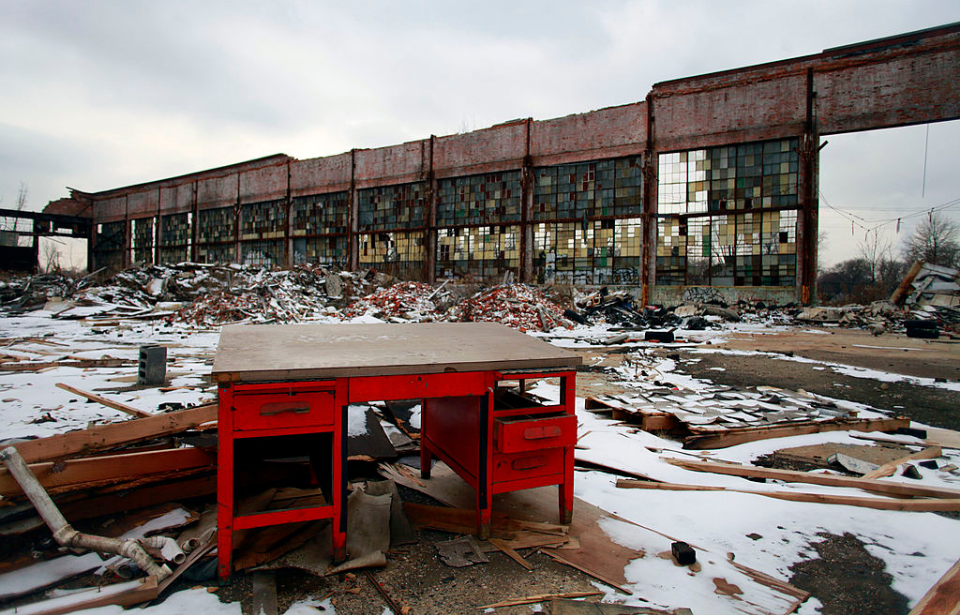The Packard Automotive Plant in Detroit, Michigan was once one of the most innovative in the world. Spanning 40 acres of the city’s east end, it employed some 40,000 workers at its peak. Unfortunately, like many others in Detroit, the company ceased operations, leaving a decaying concrete building in its wake.
An innovative factory on East Grand Boulevard
By the early 20th century, Packard Motor Car Company had earned a reputation for building cars that were not just luxurious, but that also incorporated new technologies, such as the modern steering wheel and the 12-cylinder engine.
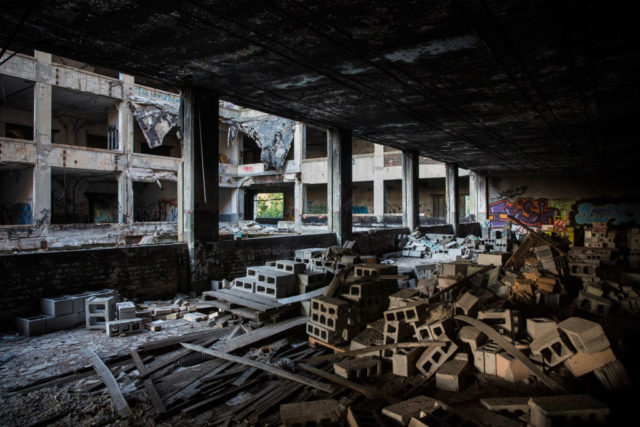
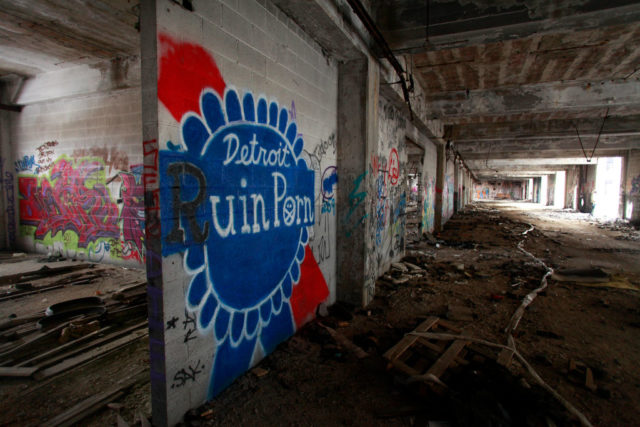
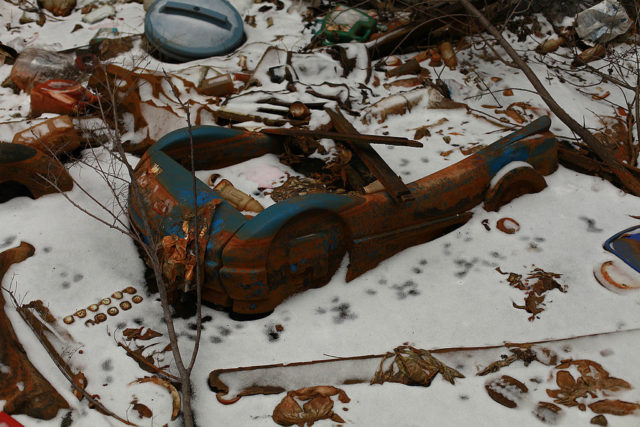
The company opened its 10,000-square-foot factory along Detroit‘s East Grand Boulevard in 1903. It consisted of nine buildings designed by Albert Kahn, who’d opted to use the mill-style design of other factories. However, this made for cramped rooms and very little sunlight. The buildings were also a fire hazard, as they were primarily constructed from wood.
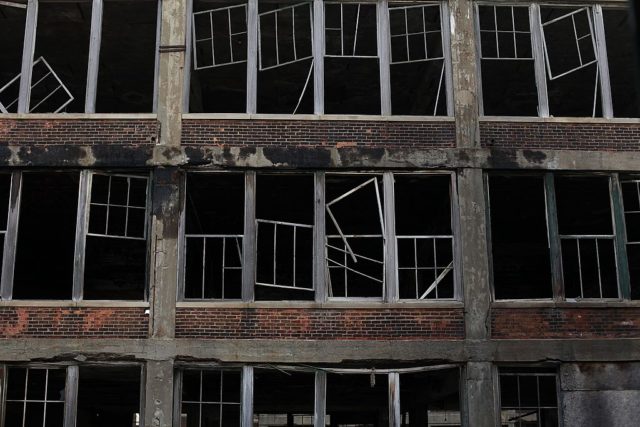
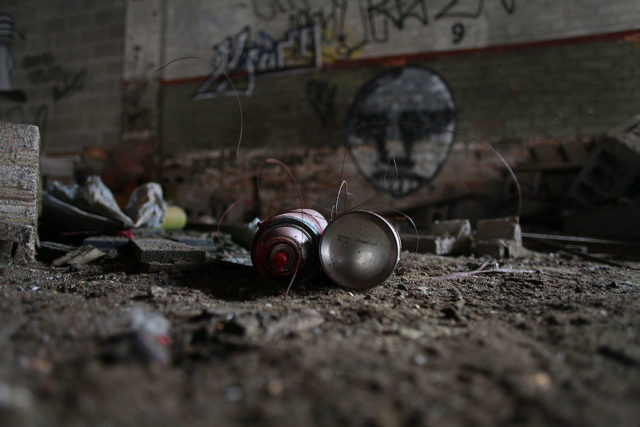
Wanting to improve the design of the 10th building, Kahn approached his brother, Julius, an engineer experimenting with reinforced concrete. The result was the first use in America of reinforced concrete for industrial construction within the automotive industry. It was also considered the most modern factory in the world.
By 1908, the Packard Automotive Plant was six times larger than when it first opened, spanning 14 acres.
A shift leads to the factory’s eventual closure
During World War I, the Packard Automotive Plant assembled airplane engines. After the conflict’s conclusion, the company switched from hand assembly to an automated assembly line, which was followed in the 1930s by the installation of a multi-story assembly line.
During this time, it was used as the set of the 1939 production of Merry Widow, featuring a young Betty White.
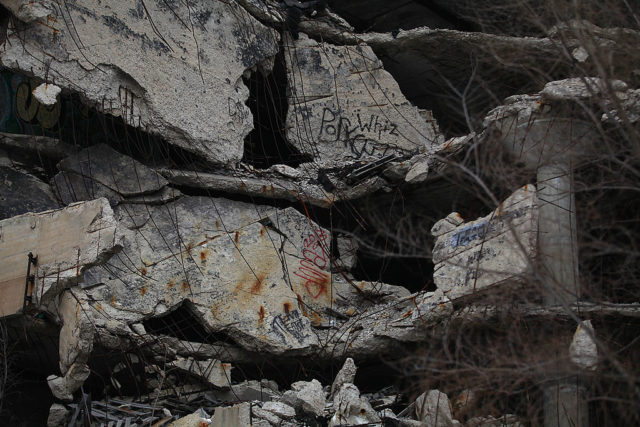
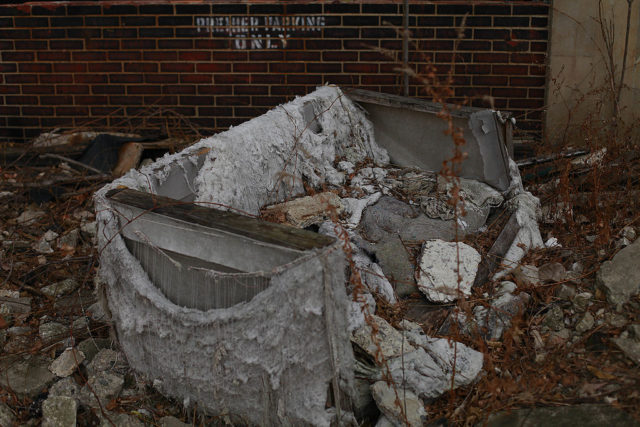
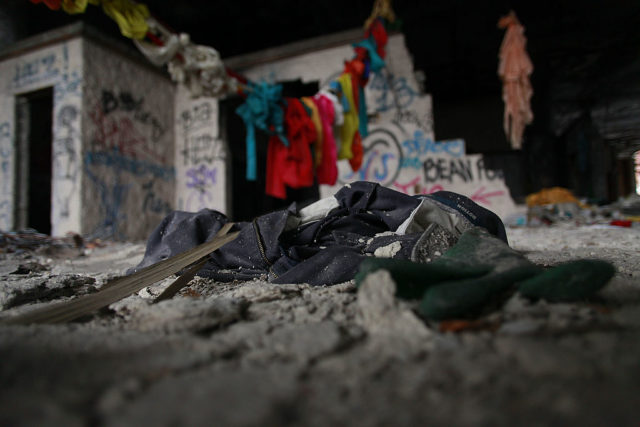
When World War II began, the factory once again shifted its efforts to the war effort, manufacturing the Packard V-1650 Merlin engine, which powered the P-51 Mustang.
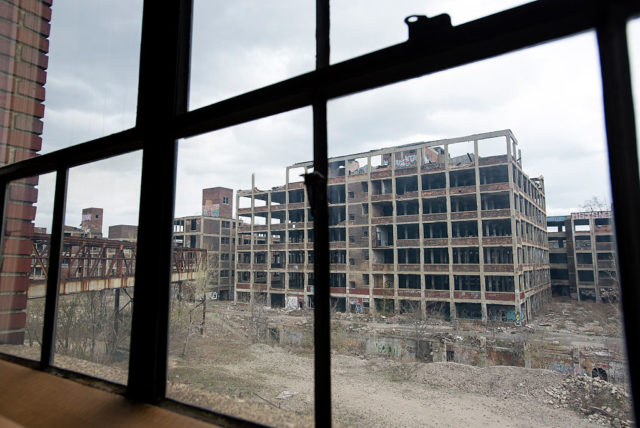
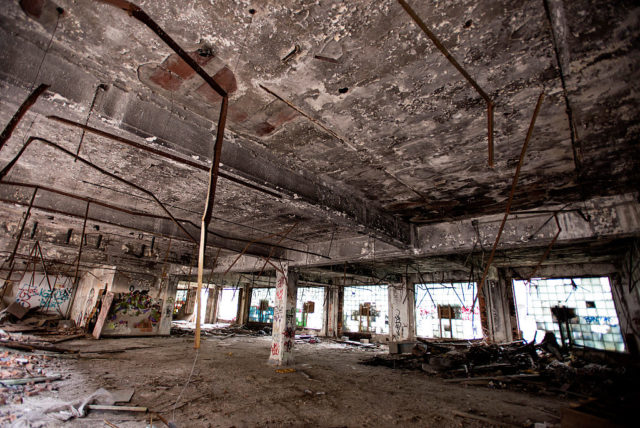
Packard started to lose its status when it began assembling cars geared toward the middle class. This greatly hurt the company’s sales, which were further compounded by its purchase of the Studebaker Corporation in 1954. The merged company never turned a profit, and, in 1956, its factory on East Grand Boulevard closed and production moved to a new facility on Conner Avenue.
Use of the Packard Automotive Plant after 1956
In 1958, the last caretaker of the Packard Automotive Plant was laid off, and over the subsequent decades the premises was home to multiple businesses, which leased space from its owner. Part of the complex was turned into the Motor City Industrial Park, while other areas were simply used for storage.
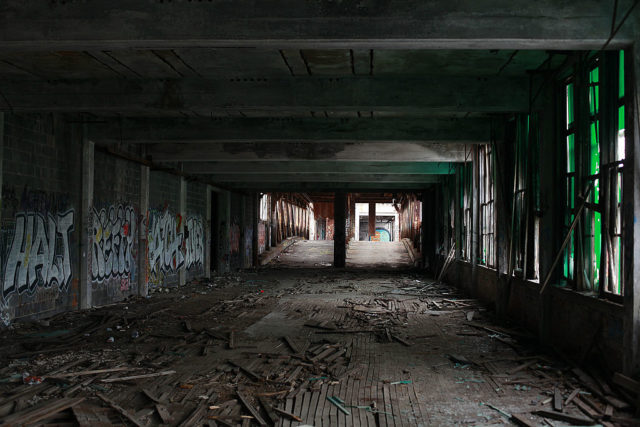
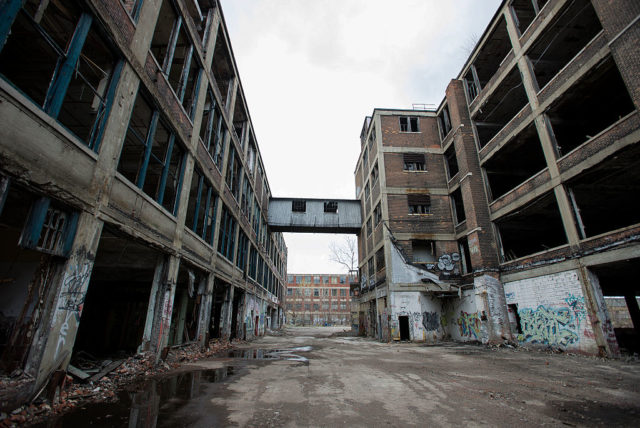
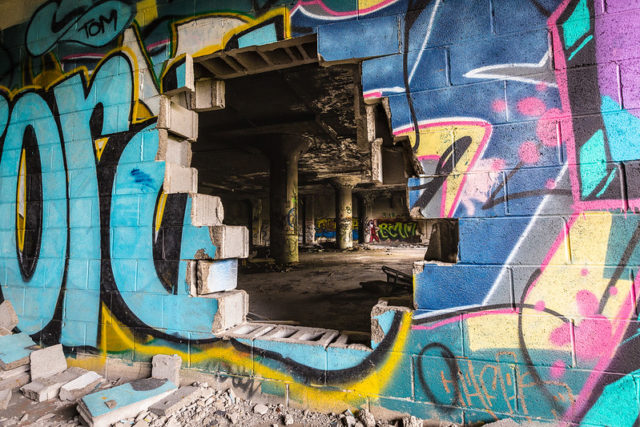
During the 1990s, the factory hosted many raves and techno parties, including the Spastik party hosted by Richie Hawtin. While much of the property continued to be occupied by businesses well into the 2000s, the last remaining tenant, Chemical Processing, gave up its lease in 2010.
The City of Detroit tries to sell the building
Since 2010, the City of Detroit has tried numerous times to sell the property or have it repurposed. This first occurred in early 2012, when the city promised to begin legal action to have the property demolished. In September 2013, 43 parcels of land were put up for auction, due to tax delinquency. The starting bid was $975,000 – the amount owed in taxes – but no one placed a bid.
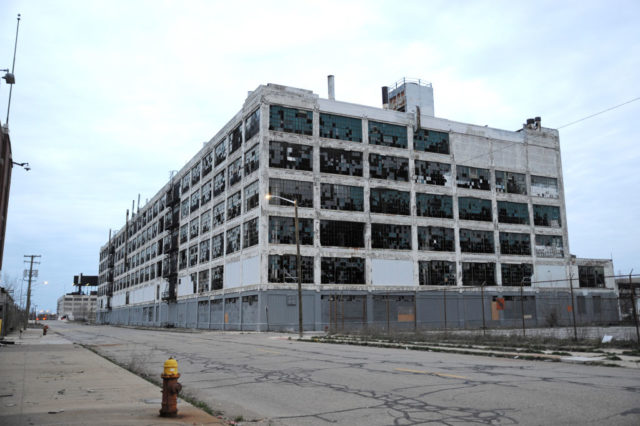
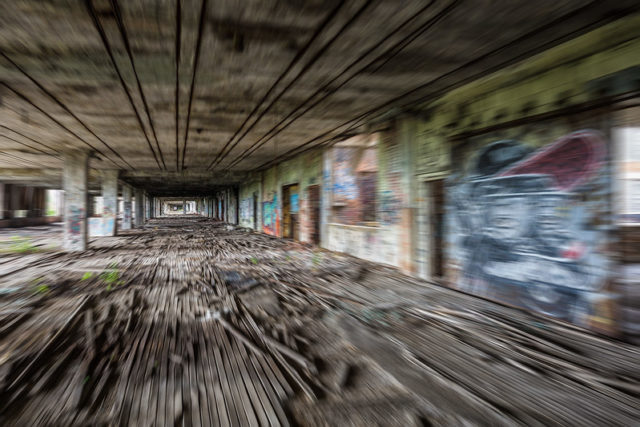
A second auction was held in October 2013 and was successful, with Texas-based physician Jill Van Horn bidding $6,038,000. She’d hoped to team up with “partners and investors from Detroit, Wall Street and international firms” to transform the property into an “economic engine.” Unfortunately, she failed to submit the required funds by the payment deadline and lost her claim to the factory.
The second bidder, Chicago-area developer Bill Hults, was then contacted. While he made several down-payments, he failed to raise the full total of his $2,003,000 bid.
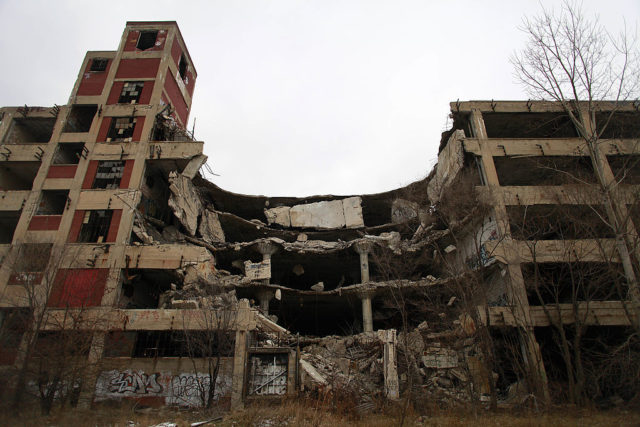
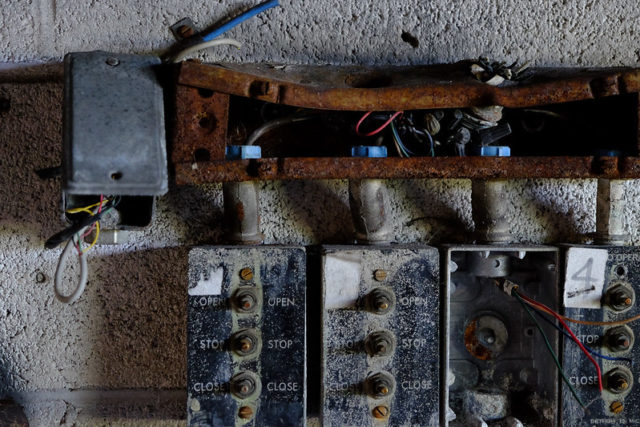
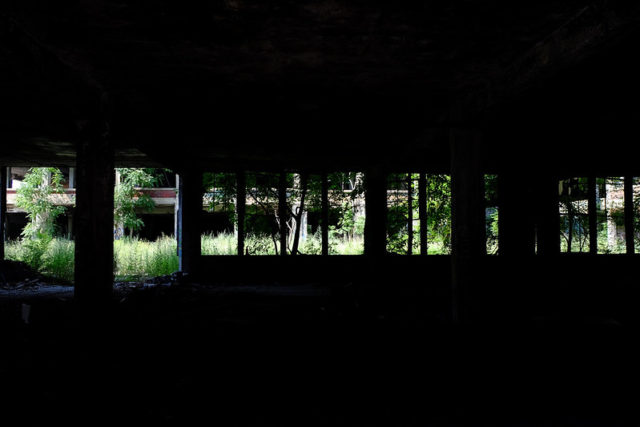
Spanish investor Fernando Palazuelo purchased the Packard Automotive Plant in December 2013 for $405,000. He hoped to use it for residential, art, retail, offices, recreation and light industry purposes, with the ultimate aim of convincing one of the Big-3 automakers to set up shop in the factory. While Arte Express, his holding company, held a ground-breaking ceremony in May 2017, it was announced in October 2020 that the redevelopment plans had been abandoned.
The new plan? Large-scale demolition.
Packard Automotive Plant today
Despite decades of neglect, the majority of the Packard Automotive Plant remains standing, albeit with a few structural concerns. It has been used as a set for many popular television shows, including AMC’s Low Winter Sun and the season three premiere of Amazon’s The Grand Tour.
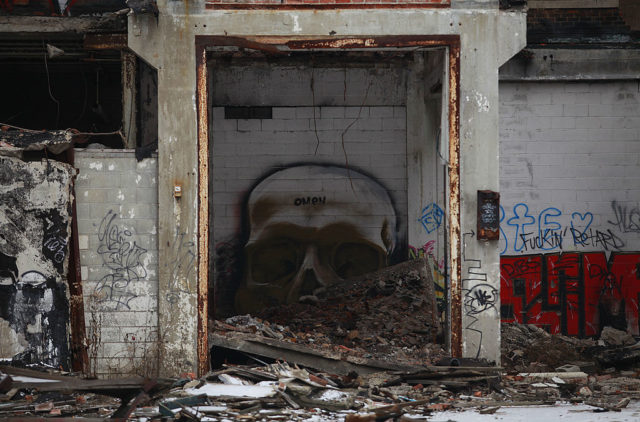
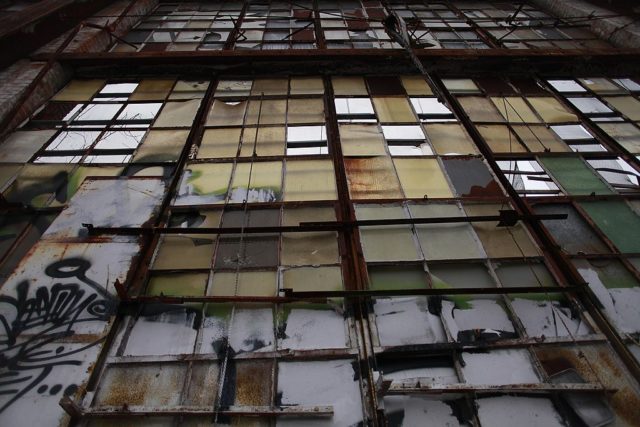
More from us: Brach’s Candy Factory: From Successful Operation to Demolished Movie Set
Today, the plant is largely covered in graffiti and has been left in a derelict state. Much of the wiring and other materials have been removed by scrappers, and in one incident, vandals pushed a dump truck off the fourth floor. It’s since been used by paintballers looking for fun and urban explorers, and for many is just one of the many symbols of Detroit’s decades-long economic decline.
